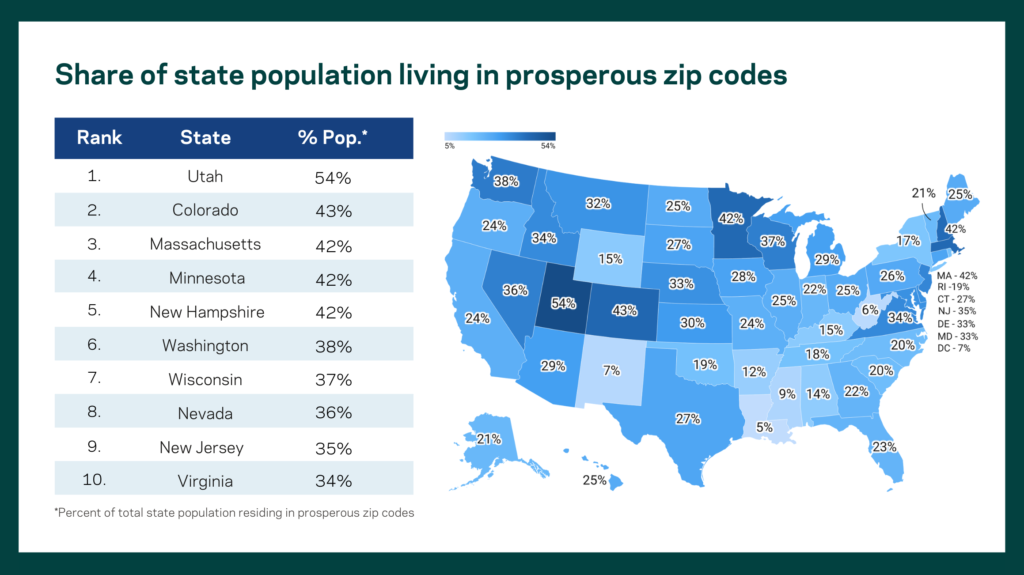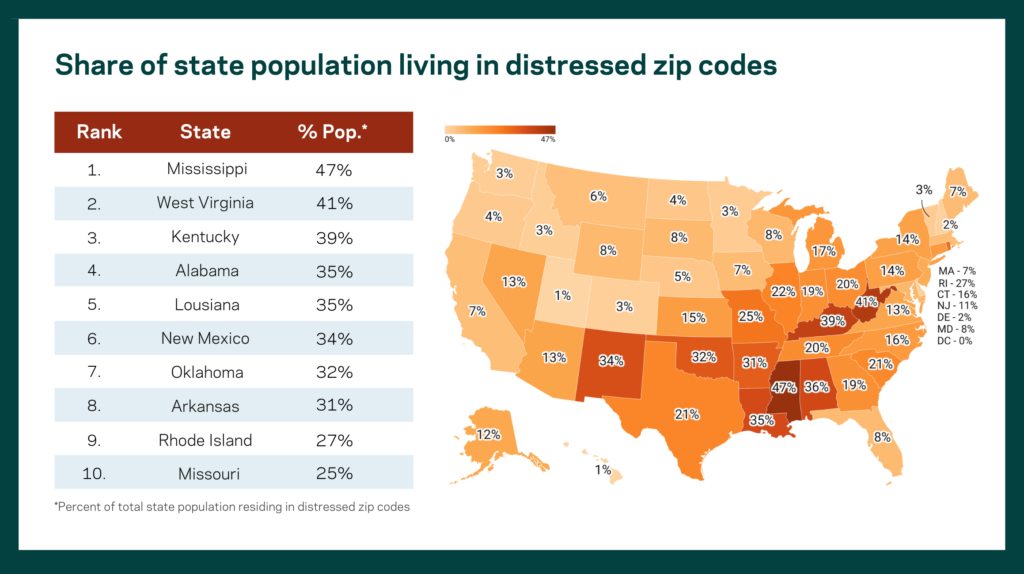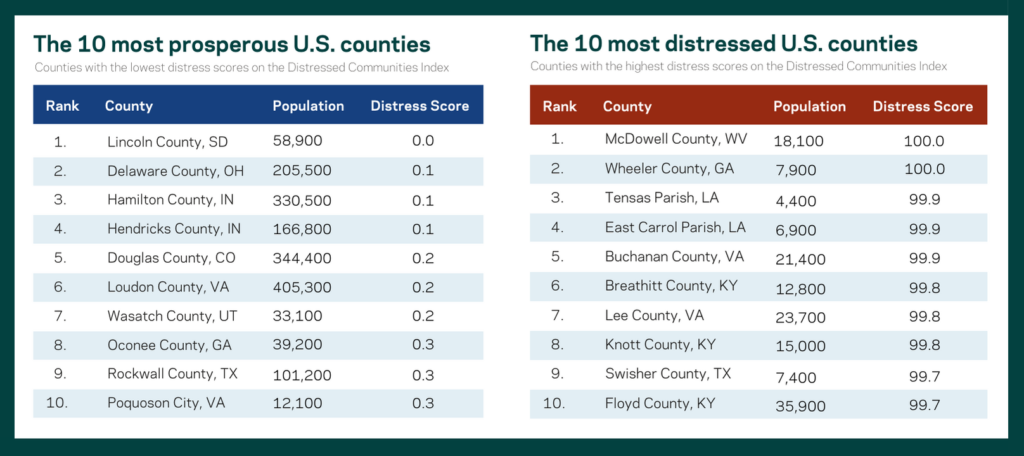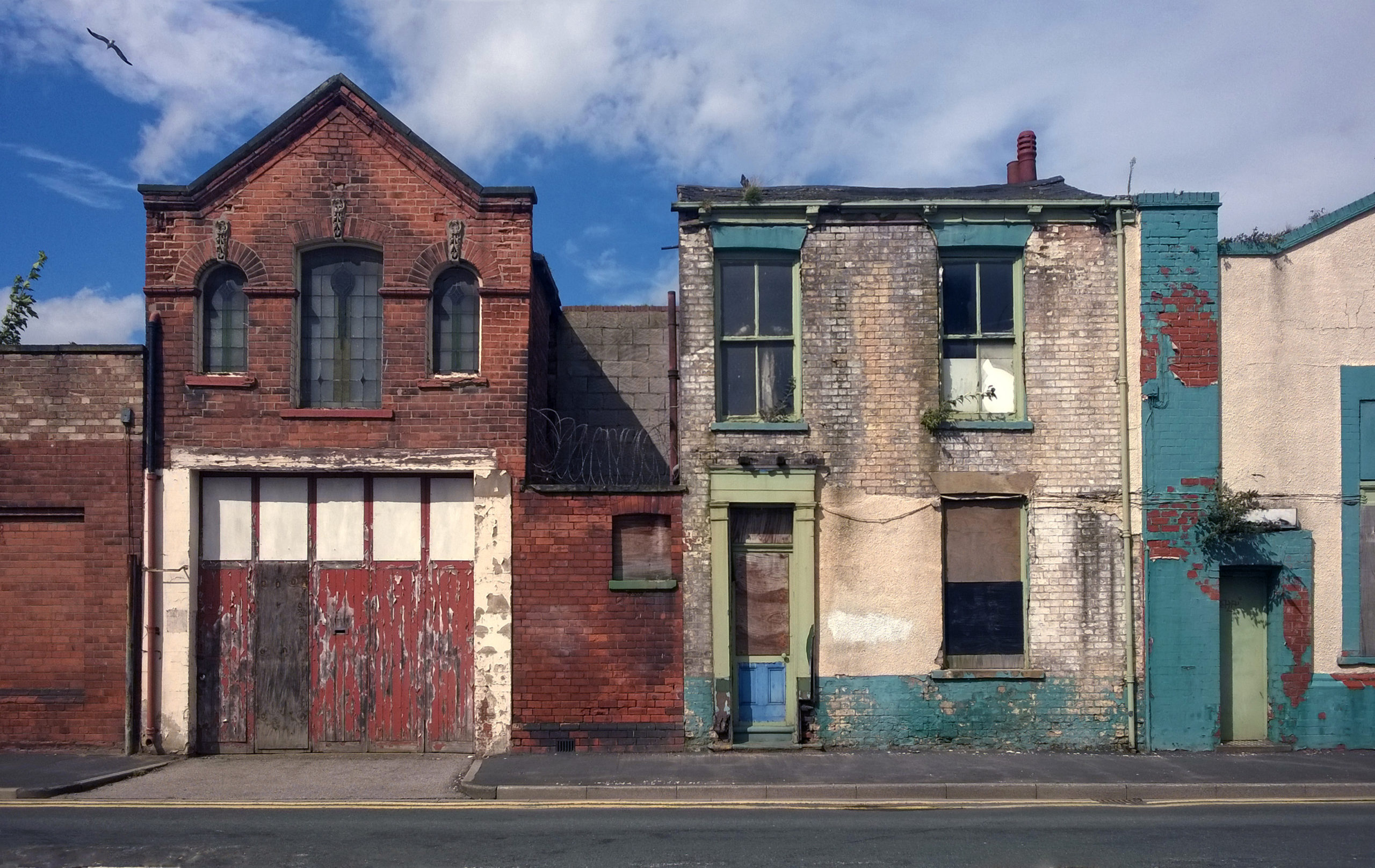The newest vintage of the Distressed Communities Index (DCI) draws on the latest available local data covering the years 2016 to 2020 to paint a comprehensive picture of local economic well-being in the United States. The latest figures run up through the end of the longest economic expansion in recent history and into the early onset of the pandemic. The DCI ranks communities into five quintiles, from prosperous to distressed. At the state level, that allows for an assessment of which states have a greatest share of their populations living in zip codes that fall into each national tier of well-being. Distress scores are calculated afresh for counties, producing another unique angle on the geography of American well-being.
States vary immensely in their densities of economic distress or prosperity.
Ranking every zip code in the country against each other on the seven metrics of the DCI and aggregating the results by state, massive gaps emerge in the sheer concentration of zip codes at either end of the spectrum across states. Several states contain almost no zip codes that rank in the bottom quintile (one-fifth) nationwide. Others maintain only a tenuous hold in the top-tier.
Utah leads the nation on economic well-being with more than half of its population residing in a prosperous zip code. The Beehive State ranks first on the DCI, with 54 percent of its population living in a zip code that falls into the top quintile nationwide in terms of economic well-being. It is followed by neighboring Colorado and then Massachusetts, Minnesota, and New Hampshire to round out the top five. Most of the leading states are both high income and highly educated, with Nevada propelled into the top 10 more on the strength of its employment and establishment growth.

Mississippi trails behind as the state with the greatest share of its population residing in a distressed zip code. The Magnolia State comes in 51st on the Distressed Communities Index with nearly half–47 percent–of its population living in a zip code that ranks in the bottom one-fifth nationally in terms of economic well-being. West Virginia follows with 41 percent living in a distressed zip code, with Kentucky, Alabama, and Louisiana rounding out the top five. States with such high concentrations of economic distress are all largely in the South, Southwest, or Appalachian regions. Rhode Island is the lone exception from outside the region, a small-population state with a large cluster of distressed zip codes in Providence and nearby smaller cities. Missouri ranks 10th, combining both rural and urban economic distress to a greater extent than any other state.

At the county scale, distress scores illuminate the wide gap in well-being between much of metropolitan and rural Americas.
Distress scores can be calculated for counties, not just zip codes, and doing so provides another angle on geographic inequality in the United States. At the county level, the gradient between prosperity (defined as counties ranking in the top quintile for economic well-being) and distress (those ranking in the bottom-quintile) very much breaks along metropolitan and rural lines. This reflects the general tendency of economic growth, educational attainment, and incomes to be higher in metropolitan areas than in rural ones. However, there is also significant variation across that urban-rural divide. Rural prosperity runs very high in parts of the Midwest and Mountain West, for example, and within metropolitan areas, many core counties containing struggling central cities rank mid-tier or at-risk.
To explore the county-level results in-depth, visit the complete interactive map.
The 10 most distressed counties can be found in Appalachia and the Deep South. McDowell County, WV, ranks as the most economically distressed county in the country, followed by other small-population counties in chronically struggling parts of Georgia and Louisiana. These counties tend to combine high poverty rates with low rates of educational attainment and work, negative economic growth, and high rates of housing vacancy.

Suburban counties in the middle of the country score highest on economic prosperity. On the other end of the spectrum of American economic well-being, Lincoln County, SD, south of Sioux Falls, ranks as the country’s most prosperous county. Lincoln combines high rates of educational attainment and work with low poverty rates and fast growth and development in the northern reaches of the county. Similarly, affluent and growing counties around Columbus, OH, Indianapolis, IN, and Denver, CO round out the top five.






